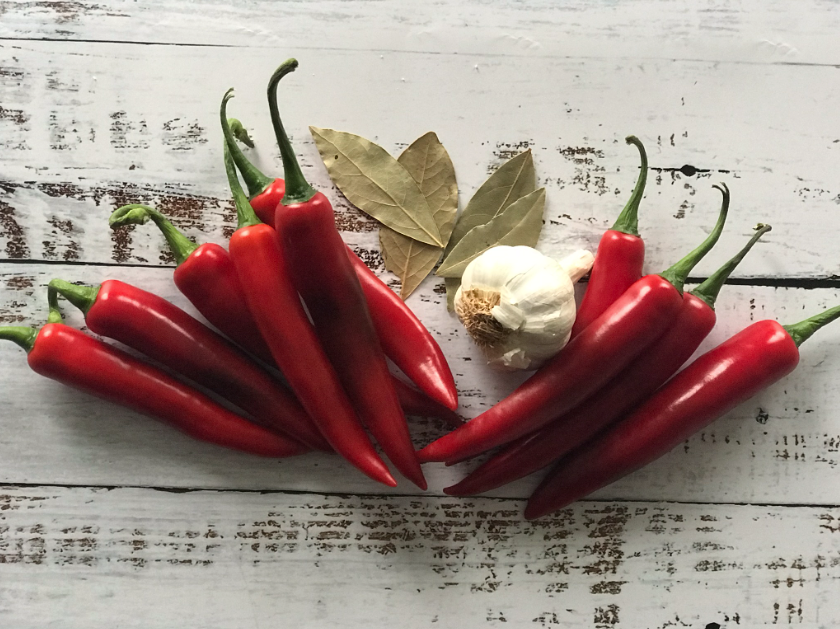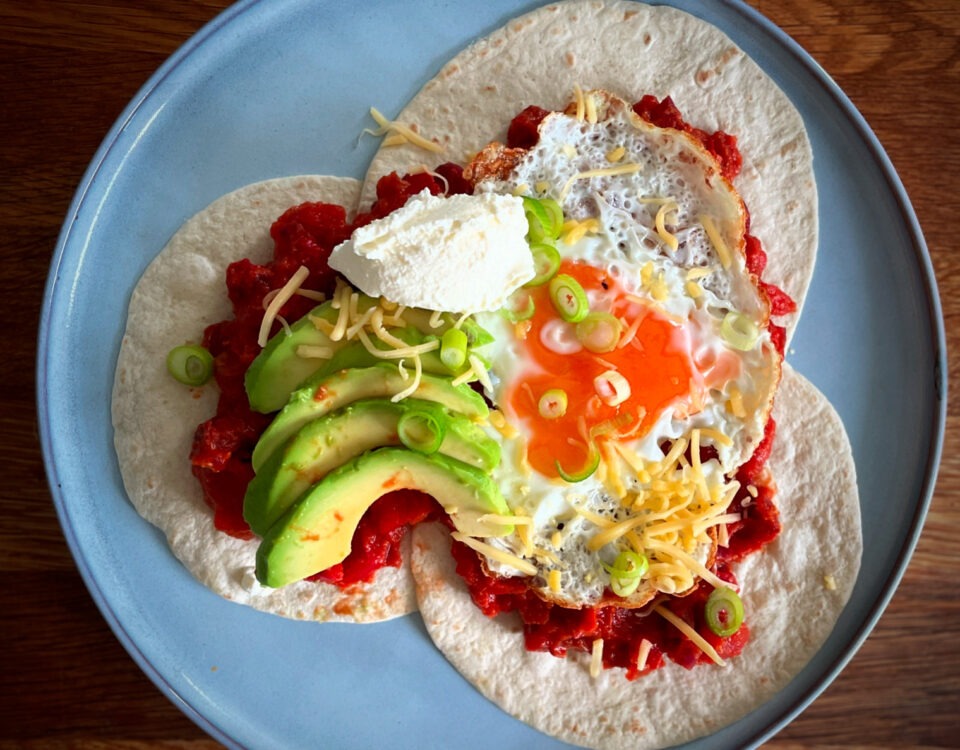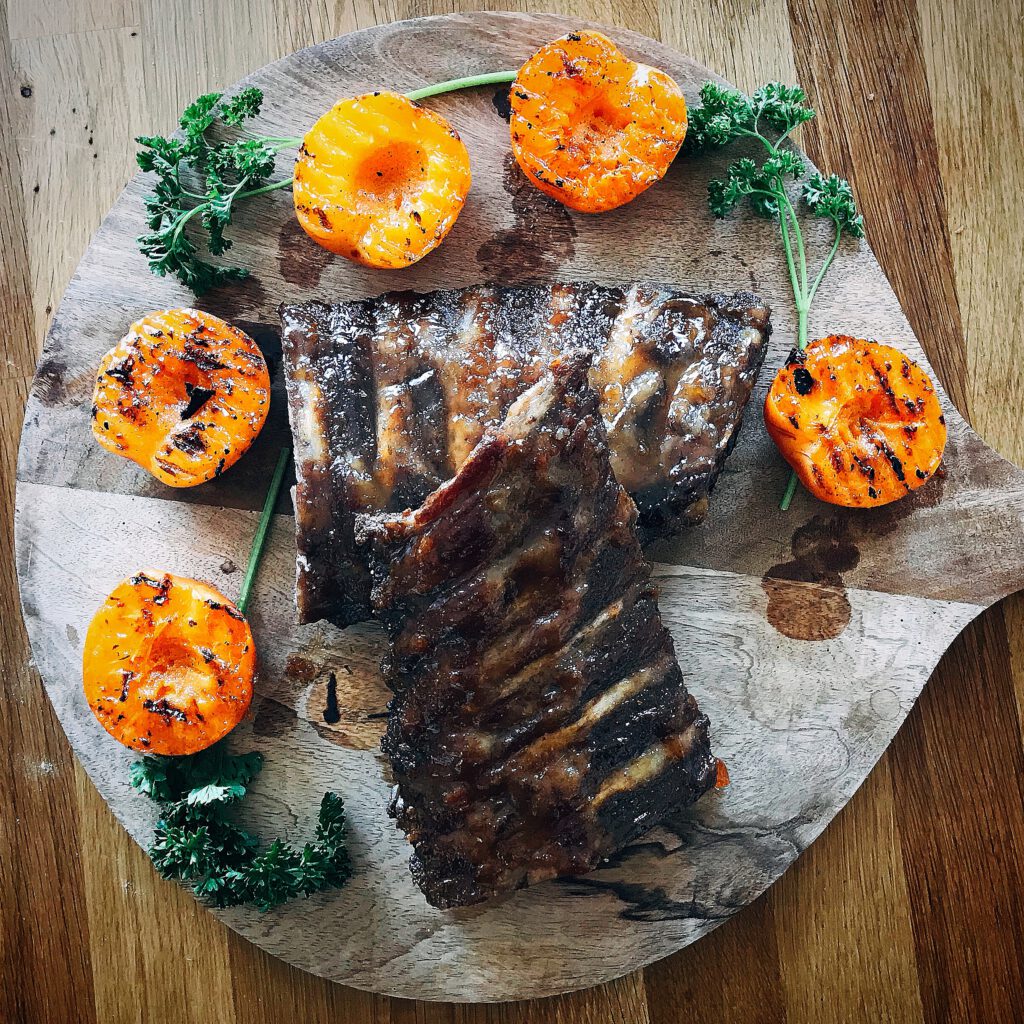
Apricot spareribs from the BBQ
February 21, 2023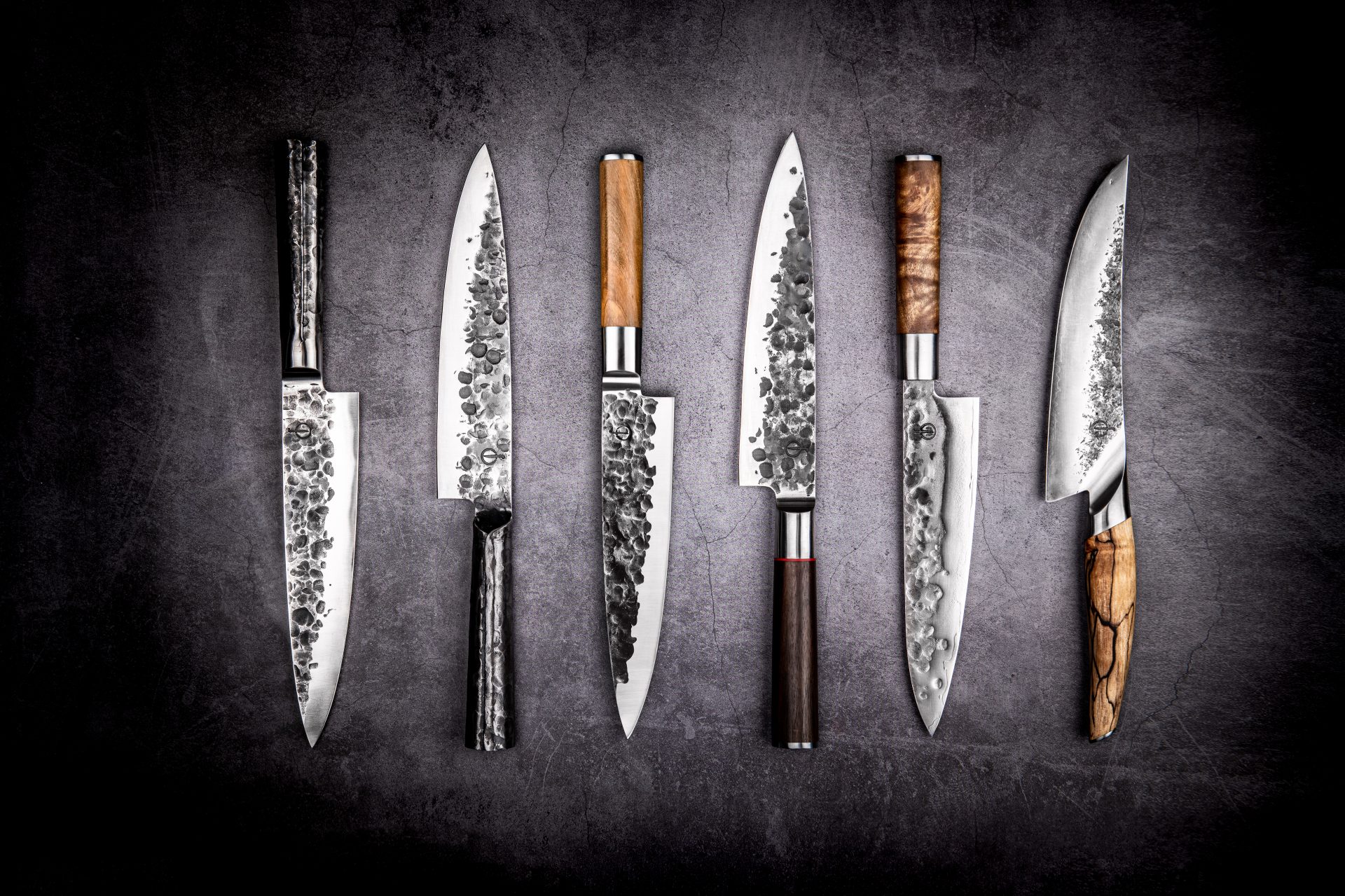
A complete guide about knives in the Kitchen – part 1
March 17, 2023Here in the Netherlands its a whole culture. People who love Sambal. And that is not a strange thing concidering our dutch History. We have a long, difficult relationship with countries like Indonesia for example where a lot of Sambal comes from. Sambal is a indonesian chilli paste or sauce. It’s something that here in the Netherlands people (those who love it) put on almost everything. And where Some people can’t stand it at all, while others can’t get enough heat. There are countless types and just as many ways to make sambal, each person has their own method for it. Sambal originated from Indonesia, but variations from Thailand and Suriname are also known. I absolutely love it. I always have one or more types of sambal or other spicy sauces in my kitchen. In the supermarket, you can find the most common ones, and of course, there are those from specialty stores (toko) and many of those are delicious. And if you’re lucky, they might have a homemade or locally made version. And those are the tastiest! But did you know that making sambal yourself is actually incredibly easy? If you search the internet, you’ll find all sorts of recipes, some more elaborate than others. However, if you look in old cookbooks (I have a lot), you’ll find more traditional recipes. So what i did is just make one big article that has them all together. All recipes i found in very old indonesian cookbooks that i have here and some i got from indonesian friends who have these recipes memorised by hearth due to being passed down generations.
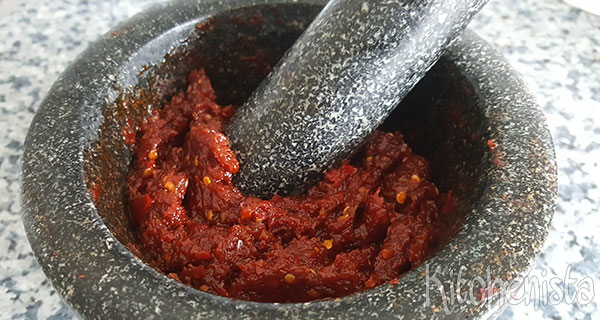
In this article, you will find a huge variety of sambal recipes, some of which go back a long way. Many of these recipes were passed down to me by my mother, who was also a big fan of sambal. She collected a lot of these recipes over the years. And now I’m sharing them with all of you.
Traditional Terms:
- Trassi – Shrimp paste
- Petis – Black shrimp paste (resembles apple syrup)
- Thick santen – Thick coconut milk
- Asemwater – Also known as tamarind, available at Asian grocery stores
- Ketoembar – Coriander seeds
- Laos – Often the shoots of the galangal plant, also known as galangal in stores
- Djeroek poeroet – Lime leaves
- Djeroek Nipis – Lime juice
- Ebbie – Dried shrimp
- Sereh – Lemongrass
- Katjang pandjang – Long beans (kouseband)
- Goela djawa – Brown sugar or palm sugar
- Peteh beans – Sometimes referred to as “stink beans,” can be found at Asian grocery stores.
The sambal that is often used as a base for other variations is Sambal Oelek. The pepper used for this is the Spanish pepper, also known as Lombok or chili pepper. Use the peppers whole, without removing the seeds and membranes. The heat is mostly in the seeds and membranes.
Sambal Oelek (the standard sambal used as a base)
- 20 Spanish red peppers
- 2 tsp. salt
Preparation:
- Wash and cut the peppers into small pieces, crush them with salt into a paste. You can also grind them in a meat grinder or food processor. This sambal can be stored for quite a while in a well-sealed jar in the refrigerator. It’s even more long-lasting in the freezer!
Sambals with Shrimp Paste: Sambal Trassie
- 20 red Spanish peppers
- 1 tsp salt
- 1 tsp trassie (shrimp paste)
Preparation:
- Process the Spanish peppers like in the Sambal Oelek recipe and mix in the trassie.
Sambal Klappa
- 300g grated coconut
- 3 Spanish peppers
- 1 tsp salt
- 1 tsp trassie
- 1 dash laos
- 2 djeroek poeroet leaves (lime leaves)
- 2 tbsp oil
Preparation:
- Roast the herbs with finely pounded peppers and grated coconut.
- (Sambal Klappa can also be prepared differently using the same ingredients)
- Roast the grated coconut until light brown, finely chop all ingredients, except the djeroek poeroet. Add the chopped ingredients to the oil, except the grated coconut and djeroek poeroet. Stir in the roasted coconut and djeroek poeroet at the end.
Sambal Petis
- 10 Spanish peppers
- 1/2 tsp salt
- 2 tsp petis (black shrimp paste)
Preparation:
- This sambal is prepared like Sambal Oelek, but you mix in the petis.
Sambal Djeroek-Nipis
- 3 djeroek-nipis (lime)
- 4 Spanish peppers
- 1 tsp trassie (shrimp paste)
Preparation:
- Wash the lime well, slice it into rounds, and squeeze out the juice. Save the peels. Crush the peppers with trassie and lime peels, and add the lime juice.
Sambal Boeboek Kring
- 200g dried shrimp (ebbie)
- 1 tbsp sambal oelek
- 5 cloves of garlic
- 1 tsp kentjoer
- 2 djeroek poeroet leaves
- 1 tsp trassie
- Salt
Preparation:
- Roast the dried shrimp and crush or grind them finely. Crush the herbs too. Mix all ingredients together.
This is a dry sambal and can also be used as a rub for marinating meat. A rub is a mixture of ground herbs used to rub meat, enhancing its flavor. Meat is often rubbed with the mixture a day before cooking to allow the flavors to penetrate.
Sambals with Vegetables: Sambal Katjang
- 50g peanuts (finely pounded)
- 3 tbsp oil
- 3 dl thick santen (coconut milk)
- Salt
- 3 tbsp asemwater (tamarind juice)
Herbs:
- 8 red Spanish peppers
- 3 cloves of garlic
- 1 cm ginger
- 4 shallots
- 2 tsp trassie
- 2 tsp brown sugar
Preparation:
- Pound the herbs into a paste using a mortar and pestle, or finely chop them. Quickly fry the finely pounded herbs in oil, then add santen while stirring. When the santen is fully absorbed, add peanuts and salt. Increase the heat and cook until oil separates. Finally, mix in the asemwater.
Sambal Asem
- 1 tbsp sambal oelek
- 2 tsp asem (tamarind)
- 1 tbsp brown sugar
- 2 dl water
- 1 chopped onion
- 1 tsp salt
Preparation:
- Cook asem and brown sugar in water until it thickens. Add sambal oelek and onions and let the mixture cook again. Strain the mixture and re-cook what went through the strainer.
Sambal Godok
- 2 tbsp chopped white cabbage
- 1 tbsp chopped kouseband (long beans)
- 1 tbsp pete beans (can be omitted if unavailable)
- 200g peeled shrimp
- 1 chopped onion
- 4 tsp garlic (or garlic powder)
- 1 dash laos
- 1 tsp trassie
- 4 roasted kerrie nuts
- 2 tbsp sambal oelek
- 1/2 tbsp ketoembar (coriander)
- 1/2 santen leaf (coconut leaf)
- 1 djeroek poeroet leaf
- Salt
- Oil
Preparation:
- Boil the vegetables in water and sauté the onions in sunflower oil. Crush all other spices. Add all ingredients to the vegetables and simmer until the mixture forms a thick paste.
Sambal Peteh
- 1/2 jar of peteh beans
- 1 tbsp sambal oelek
- 1 onion
- 4 cloves of garlic
- 1 dash laos
- 1 stalk of sereh (lemongrass)
- 200g peeled shrimp
- 1 tbsp trassiewater
- 1 tbsp asemwater
- 1/8 santen leaf
- Salt
- Oil
Preparation:
- Sauté the onion and shrimp in oil. Add asemwater, all other ingredients, and let it simmer until the oil comes out.
Sambal Badjak
- 2 large onions
- 2 cloves of garlic
- 10 ground kemiri nuts
- 6 Spanish peppers
- 1/2 stalk of sereh
- 4 djeroek poeroet leaves
- 2 daon salam (salam leaves)
- 1 dash laos
- 1 tbsp sugar
- 2 tbsp asemwater
- 1 tbsp trassiewater
- 1 tsp salt
- Santen
- Oil
Preparation:
- Finely chop and sauté onions and herbs (except salam and djeroek poeroet) in oil. Add asemwater, trassiewater, daon salam, and djeroek poeroet, let it simmer. Add santen, simmer until oil appears and sambal becomes nearly dry.
Sambal Tomatoes
- 5 ripe tomatoes
- 1 onion
- 1 tsp nutmeg
- 1/2 tbsp pepper
- 1 tbsp sambal oelek
- 1/4 cup vinegar
- Salt
- Oil
Preparation:
- Finely chop the tomatoes. Sauté crushed onion, nutmeg, pepper, and sambal in oil. Add vinegar and tomatoes, boil until a thick sauce forms.
Sambal Ebbie
- 200g ebbie (dried shrimp)
- 1 onion
- 1 tbsp asemwater
- Oil
Herbs:
- 5 kemiri nuts
- 1 tsp trassie
- 1 stalk of goela djawa
- 2 djeroek poeroet leaves
- 1 tbsp sambal oelek
Preparation:
- Roast or sauté the onion and ebbie in oil. Add asemwater and all other ingredients, cook until it thickens.
Sambal Trassie with Onion
- 30 Spanish peppers
- 2 large onions
- 2 tsp trassie
- 1 1/2 tsp salt
- Oil
Preparation:
- Finely slice the peppers and mix with trassie, sauté in oil. Add finely chopped onions and salt, cook well.
Sambal Oedang Kiong
- 1 onion
- 5 cloves of garlic
- 200g dried shrimp
- 2 djeroek poeroet leaves
- 2 Spanish peppers
- 1 tsp trassie
- 1 dash laos
- 1/2 stalk of sereh
- 1 tsp salt
- 1 tsp sugar
- 1 tbsp asemwater
- 1-2 cups santen
- Oil
Preparation:
- Soak or soften the dried shrimp. Finely chop and sauté onions, garlic, and herbs (except djeroek poeroet) in oil. Add djeroek poeroet and asemwater, let it simmer. Add shrimp and santen, stir until the shrimp are cooked and the sambal turns red.
Sambal Djelenta
- 6 green Spanish peppers, finely sliced
- 6 red Spanish peppers, finely sliced
- 1 tsp trassie
- Salt
- 1/2 dl water
- Butter
- 2 tbsp coconut oil
Preparation:
- Sauté finely sliced Spanish peppers in oil. Crush or grind them with salt and trassie. Sauté them again with a little water until fully cooked.
Sambal Prei (leek)
- 1 leek
- 1 red onion
- 1 tbsp sambal oelek
- 4 kemiri nuts
- 2 tbsp lemon juice
Preparation:
- Finely chop and knead leek with salt. Crush kemiri nuts and onions, cook with santen, sambal, and lemon juice. Mix everything and cook until dry.
Sambal Kool (cabbage)
- 250g cabbage
- 2 onions
- 6 cloves of garlic
- 2 tbsp sambal oelek
- 4 cm sereh
- 1 tsp salt
- 2 cups santen
- Oil
Preparation:
- Finely chop onions and garlic, sauté with sambal and spices. Add finely sliced cabbage and sauté until half cooked. Then add santen, cover, and stew until fully cooked. You can refine the dish by adding fresh shrimp and a little lemon juice.
Sambal Katjang Pandjang
- 200g katjang pandjang (long beans)
- 2 cloves of garlic
- 2 red onions
- 1 tbsp sambal oelek
- 1 dash laos
- 1 tsp trassie
- Santen
- Salt
- Oil
Preparation:
- Crush onions and spices in a mortar or finely chop them, sauté. Boil katjang pandjang until almost cooked, then finely chop if desired and add to the onions. Add santen and bring everything to a boil until oil appears.
Sambal Serdadoe
- 10 red Spanish peppers
- 2 onions
- 2 tbsp ketjap (soy sauce)
- 2 tbsp oil
- Salt
Preparation:
- Finely chop the peppers and onions, sauté until smooth. Put this in a bowl and pour some ketjap over it.
Please note that this is a translation of the provided Dutch text and the recipes might need further clarification or adjustment for precise cooking instructions.


